
Peter Ernst, Graf von Mansfeld, or simply Ernst von Mansfeld, was a German military commander; despite being a Catholic, he fought for the Protestants during the early years of the Thirty Years' War. He was one of the leading mercenary generals of the war.
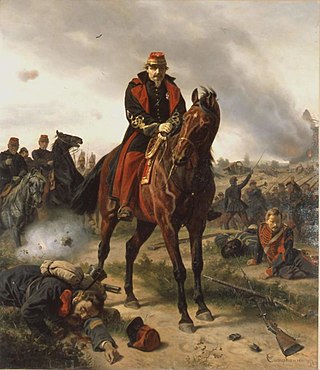
The Battle of Sedan was fought during the Franco-Prussian War from 1 to 2 September 1870. Resulting in the capture of Emperor Napoleon III and over a hundred thousand troops, it effectively decided the war in favour of Prussia and its allies, though fighting continued under a new French government.

The House of Lichnowsky or House of Lichnovský is the name of an influential Czech aristocratic family of Silesian and Moravian origin, documented since the 14th century.

Johann Centurius Hoffmann Graf von Hoffmannsegg was a German botanist, entomologist and ornithologist. The standard author abbreviation Hoffmanns. is used to indicate this person as the author when citing a botanical name.

The Kingdom of Lombardy–Venetia, commonly called the "Lombardo-Venetian Kingdom", was a constituent land of the Austrian Empire from 1815 to 1866. It was created in 1815 by resolution of the Congress of Vienna in recognition of the Austrian House of Habsburg-Lorraine's rights to the former Duchy of Milan and the former Republic of Venice after the Napoleonic Kingdom of Italy, proclaimed in 1805, had collapsed.
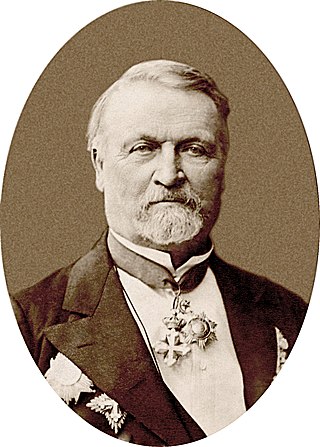
Baron Emmanuel Felix de Wimpffen was a French soldier and general of Austrian descent.
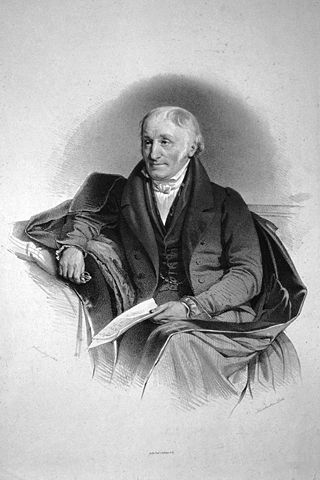
Bernhard, Knight and Baron von Eskeles was an Austrian-Jewish banker/financier and Court Jew.
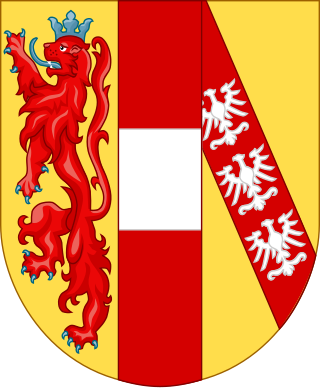
The House of Habsburg-Lorraine originated from the marriage in 1736 of Francis III, Duke of Lorraine and Bar, and Maria Theresa of Austria, later successively Queen of Bohemia, Queen of Hungary, Queen of Croatia and Archduchess of Austria. Its members are the legitimate surviving line of both the House of Habsburg and the House of Lorraine and inherit their patrimonial possessions from their female line of the House of Habsburg and from the male line of the House of Lorraine.

The House of Kleist is the name of an old and distinguished Prussian noble family, originating in Pomerania, whose members obtained many important military and administrative positions within the Kingdom of Prussia and later in the German Empire. Members of the family served as officers in Prussian and German conflicts including the War of Spanish Succession, War of the Austrian Succession, Seven Years' War, Napoleonic Wars, World War I and World War II.

Felix Ludwig Grafvon Bothmer was a German general from Bavaria. He notably served in the Brusilov offensive of World War I.
The House of Nostitz is an old and influential Silesian aristocratic family, whose members occupied many important positions within Holy Roman Empire and later in Austria, Bohemia, Germany and Russia.
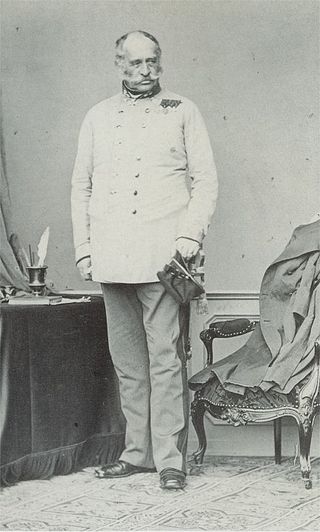
Franz Emil Lorenz Heeremann Graf von Wimpffen was an Austrian General and Admiral who served as Administrative Head of the Austro-Hungarian Navy from 1851 to 1854.

Count Franz Philipp von Lamberg was an Austrian soldier, statesman, journalist and writer, who held the military rank of field marshal. He had a short but important role in the Hungarian Revolution of 1848.
Christian Grafvon Forbach, then Christian Marquis de Deux-Ponts and later Christian Freiherrvon Zweibrücken was an officer of the French Army and later a general of the Royal Prussian and then of the Bavarian Army, at last in the rank of General der Infanterie. He should not be confused with his nephew Christian Freiherr von Zweibrücken, who was a Bavarian General of Cavalry.

Princess Marie-Adélaïde of Luxembourg was a Luxembourgish princess, the third child and the second daughter of Grand Duchess Charlotte (1896–1985) and Prince Felix of Bourbon-Parma (1893–1970).
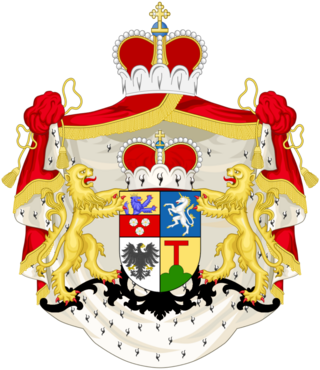
The House of Henckel-Donnersmarck is an Austro-German noble family that originated in the former region of Spiš in Upper Hungary, now in Slovakia. The founder of the family was Henckel de Quintoforo in the 14th century. The original seat of the family was in Donnersmarck, then within the Kingdom of Hungary, in a part of what is present day Slovakia. The family was ennobled in 1607 by Rudolf II, Holy Roman Emperor. Members of the family were granted other noble titles and privileges by Ferdinand II, Holy Roman Emperor in 1636, by Ferdinand Charles, Archduke of Austria in 1651, by Leopold I, Holy Roman Emperor in 1661, and by Wilhelm II, German Emperor in 1901. In 1531, the family moved to Silesia. They were expelled from Silesia, along with other German families, in 1945 by the Soviet Army and settled in Germany and Austria.

The siege of Thionville was a battle during the War of the First Coalition.
Countess Pauline Mathilde Sophie de Garnerin de la Thuile von Montgelas was an Italian-born German writer, photographer, and Catholic activist. She was a leading figure in the development of the German Catholic Women's Association and a staunch opponent of Nazism during World War II. Von Montgelas worked extensively in advocating for the rights of women working in domestic service and wrote articles about social responsibility for The Christian Woman.















